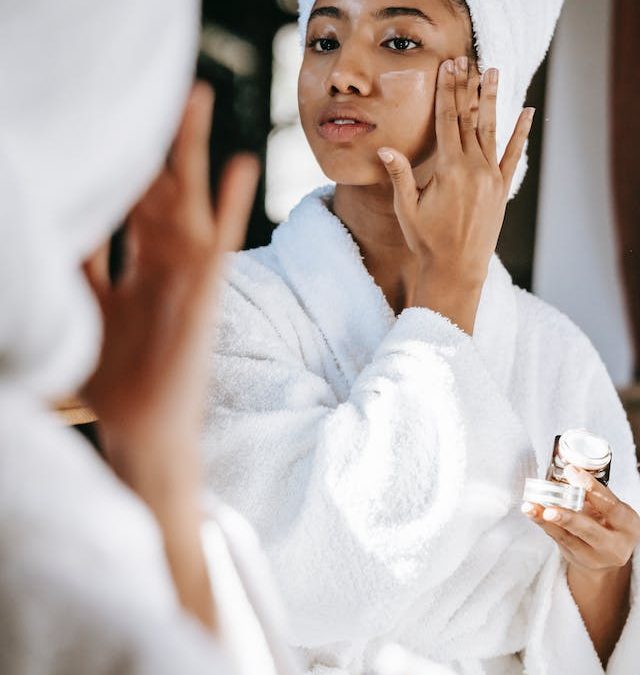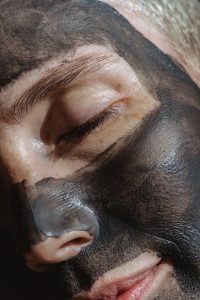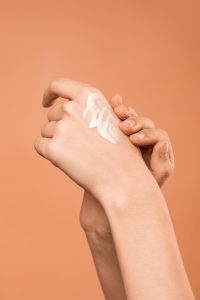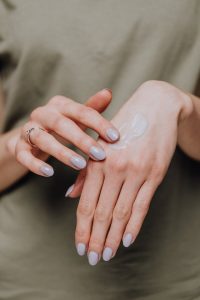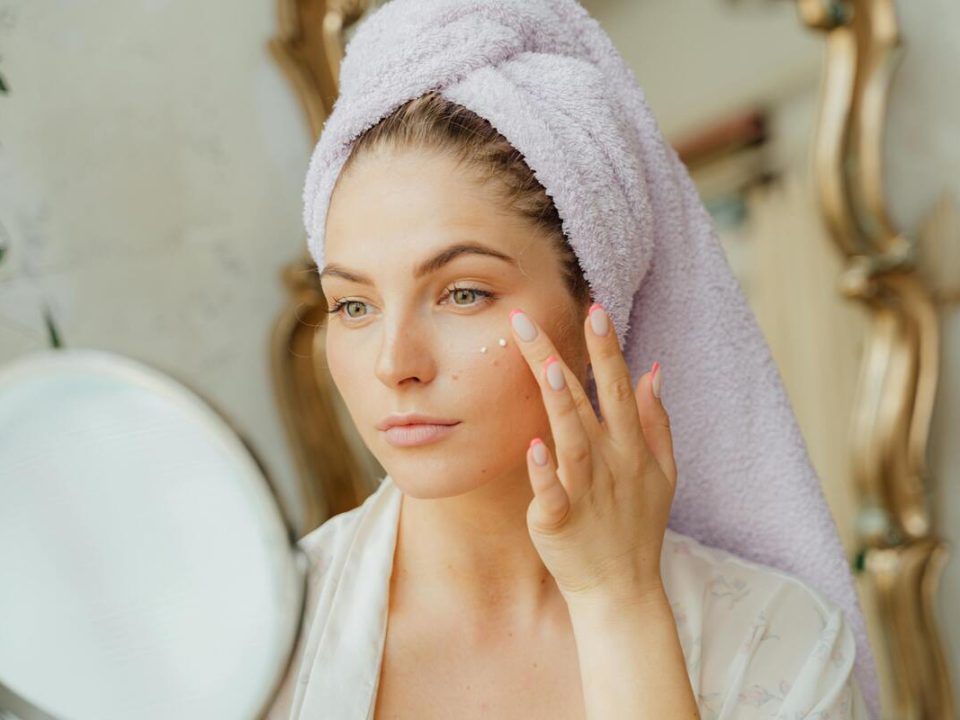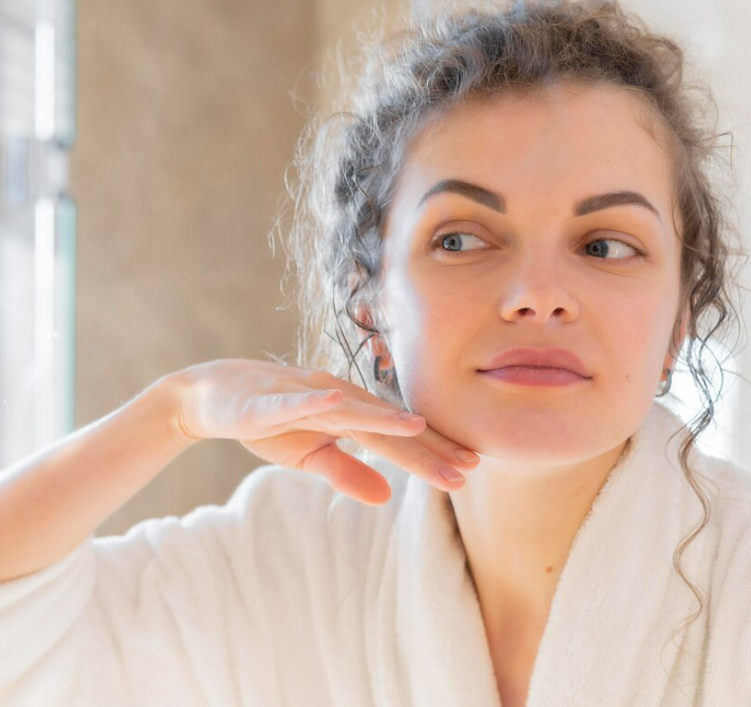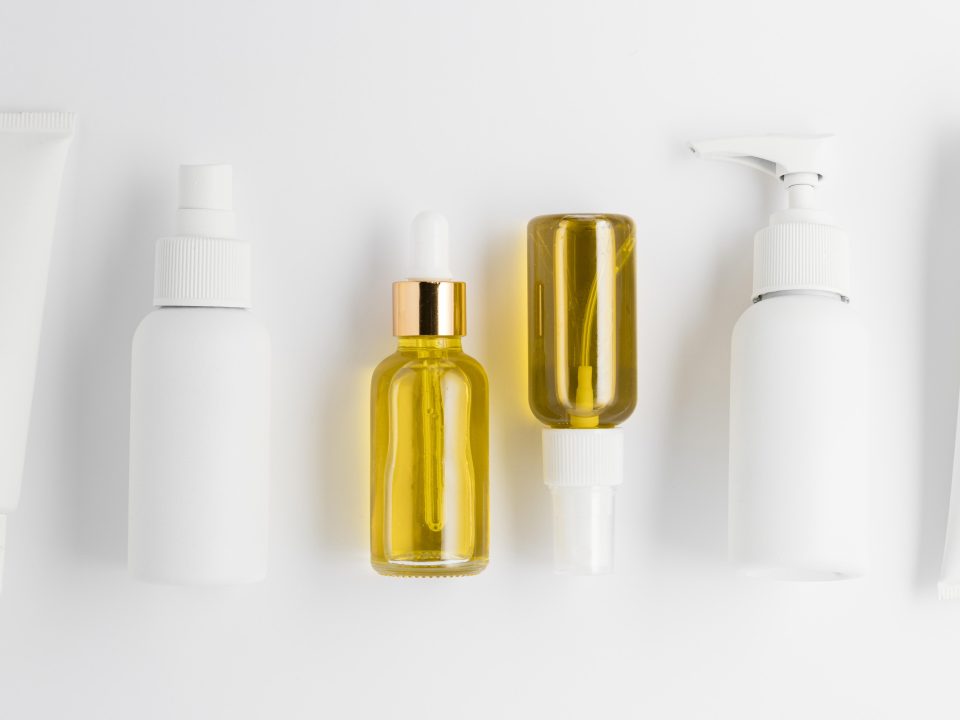
Is It Bad To Rub Off Dead Skin?
November 9, 2023How Do You Know If Glycolic Acid Is Working?
December 27, 2023The human skin, a marvel of biological engineering, serves as the body’s first line of defense against the external environment. Intricately structured, it comprises multiple layers, primarily the epidermis (the outermost layer), the dermis (middle layer), and the subcutaneous tissue (deepest layer).
The epidermis itself undergoes a continuous cycle of regeneration: new skin cells are born in its deepest layers and gradually move upwards, ultimately forming the stratum corneum, the outermost protective layer composed of dead skin cells. Over time, these cells naturally shed in a process known as desquamation, making room for fresh, new cells and maintaining the skin’s vitality and resilience.
Simultaneously, the art of moisturizing has become a cornerstone of modern skincare. Moisturizers play a critical role in maintaining the hydration and overall health of the skin. By forming a protective barrier, they prevent water loss, thus ensuring the skin remains supple, plump, and radiant. More than mere aesthetic tools, moisturizers contribute significantly to the skin’s functionality and defense mechanisms against irritants, pollutants, and microorganisms.
However, an intriguing question arises within this intersection of skin biology and skincare practice: what happens to dead skin cells when you moisturize? Do moisturizers aid in their removal, or do they trap these cells, altering the skin’s natural shedding process?
Understanding Skin Layers and Cell Turnover
The skin, our body’s largest organ, is a complex structure composed of several layers, each with its distinct functions and characteristics. The outermost layer, the epidermis, acts as a protective barrier against environmental factors like pathogens and UV radiation. It’s composed of cells known as keratinocytes, which are formed in the basal layer and gradually move towards the surface, undergoing a process of maturation and eventual death. This layer also contains melanocytes, which are responsible for pigmentation, and Langerhans cells, involved in immune responses.
Beneath the epidermis lies the dermis, a denser layer housing a network of connective tissue that provides the skin with strength and elasticity. It’s here that you find hair follicles, sweat glands, and sebaceous glands, all playing vital roles in skin health. The dermis is also rich in blood vessels and nerve endings, contributing to temperature regulation and sensation.
The deepest layer is the subcutaneous tissue, primarily composed of fat and connective tissue. This layer helps in insulating the body, absorbing shock, and storing energy.
The life cycle of a skin cell is a fascinating journey. Starting as a newly formed cell in the basal layer of the epidermis, it migrates upwards, changing in structure and composition. This process, taking about 28 days on average, ends with the cell reaching the skin’s surface, now flattened and devoid of a nucleus, effectively dead. These dead cells form a protective, tough layer before they are eventually shed, a process crucial for healthy, vibrant skin.
Several factors influence this cell turnover rate. Age is a primary factor; as we grow older, the process slows down, leading to a build-up of dead skin cells which can result in duller, less vibrant skin.
General health and nutrition also play significant roles; for instance, vitamin deficiencies can impede cell regeneration. Environmental factors like sun exposure and pollution can accelerate skin aging and affect cell turnover. Finally, skincare routines, particularly exfoliation and moisturization, can either support or disrupt this natural process. Understanding these dynamics is key to realizing how moisturizers interact with this cycle, impacting the fate of dead skin cells.
The Role of Moisturizers in Skin Health
Moisturizers are fundamental in skincare, functioning primarily to increase the water content of the skin’s outermost layer, enhance its barrier function, and provide protection against external aggressors. They achieve this by creating a thin film over the skin, which minimizes water loss and can also repair and reinforce the skin’s natural barrier. This process is vital for maintaining skin hydration, elasticity, and overall health.
Moisturizers come in various formulations, each with unique components that categorize them into three main types: occlusives, humectants, and emollients.
-
Occlusives are heavy, oil-based ingredients that create a physical barrier on the skin surface, trapping moisture inside. Common examples include petrolatum, lanolin, and mineral oil. While highly effective in preventing water loss, they can feel heavy and greasy, making them more suitable for extremely dry skin or harsh conditions.
-
Humectants attract water from the surroundings, including deeper layers of the skin and the environment (in humid conditions). This category includes ingredients like glycerin, hyaluronic acid, and propylene glycol. Humectants are effective in drawing moisture to the skin’s surface, promoting a hydrated and plump appearance.
-
Emollients are substances that smooth and soften the skin, filling in gaps and cracks, especially in dry skin. They enhance the skin’s flexibility and help in maintaining its smooth texture. Examples of emollients are ceramides, fatty acids, and squalene.
Regular use of moisturizers offers several benefits. By maintaining hydration, they prevent dryness, flakiness, and itchiness, contributing to a more comfortable skin feel. Well-hydrated skin also appears more plump, radiant, and youthful, as moisturizers can minimize the appearance of fine lines and wrinkles. Additionally, a well-moisturized skin barrier is more effective in protecting against irritants and pollutants, reducing the risk of skin disorders and sensitivities.
Understanding the types and benefits of moisturizers is crucial for choosing the right products to support individual skin needs and enhance overall skin health and appearance.
Dead Skin Cells: Shedding and Removal Process
Natural exfoliation is a critical part of the skin’s regeneration process. As new skin cells are created in the deeper layers of the epidermis, they push the older cells towards the surface. Over time, these older cells lose moisture and their nucleus, ultimately forming part of the stratum corneum, the outermost protective layer.
Gradually, these dead skin cells detach and are shed from the surface in a process known as desquamation. This natural turnover is essential for maintaining the health and appearance of the skin. Typically, this cycle takes about a month but can vary based on age, health, and environmental factors.
The role of moisturizing in this natural exfoliation process is nuanced. By maintaining hydration in the skin, moisturizers can actually improve the natural shedding of dead skin cells. Hydrated skin is more pliable, allowing dead skin cells to detach more easily. Conversely, when the skin is dry and dehydrated, dead skin cells can accumulate, leading to a rough, dull complexion.
However, over-moisturizing or using heavy occlusives can sometimes hinder the natural shedding process, trapping dead skin cells and potentially contributing to clogged pores and dullness.
To complement natural exfoliation and counteract any potential hindrance from moisturizers, physical and chemical exfoliants play a significant role. Physical exfoliants, like scrubs with granular particles, work by mechanically removing dead skin cells from the surface. On the other hand, chemical exfoliants, such as alpha and beta hydroxy acids (AHAs and BHAs), dissolve the bonds between skin cells, promoting a more uniform shedding.
These exfoliation methods can help maintain a balanced skin cell turnover, especially when natural desquamation is sluggish or hindered by over-moisturizing. Regular but moderate exfoliation, combined with appropriate moisturizing, ensures a healthy, vibrant skin surface, free from excess buildup of dead skin cells.
Moisturizing and Dead Skin Cells: The Interaction
The interaction between moisturizers and dead skin cells is a subject of interest in dermatology, with implications for both the health and appearance of the skin. One of the key ways in which moisturizers impact skin cells is by affecting their adhesion. In a well-hydrated skin environment, cells can shed more effectively as moisture helps to loosen the bonds that hold dead skin cells together on the skin’s surface. However, this effect can vary depending on the type and amount of moisturizer used.
Moisturizers, especially those that are rich in emollients and occlusives, can sometimes lead to an excess accumulation of dead skin cells. This phenomenon occurs because the moisturizer’s protective layer can trap dead skin cells that would otherwise naturally slough off. When dead skin cells accumulate, it can lead to a dull complexion and, in some cases, contribute to clogged pores or acne. On the flip side, a well-formulated moisturizer can aid in the natural desquamation process, especially when combined with ingredients that promote cell turnover, like retinoids or alpha hydroxy acids.
Experts in skin care and dermatology often discuss the importance of balancing moisturization with proper exfoliation. Studies indicate that while moisturizers are essential for maintaining skin hydration and barrier function, they should be used in concert with a tailored exfoliation regimen to prevent the buildup of dead skin cells. This balance ensures that the skin remains hydrated and nourished, without impeding its natural exfoliation process.
Recent research has also explored how certain moisturizing ingredients may influence skin cell turnover. For instance, some studies suggest that ingredients like glycolic acid, which acts as both a humectant and an exfoliant, can aid in removing dead skin cells while simultaneously hydrating the skin. In conclusion, while moisturizers play a vital role in skin health, their interaction with dead skin cells is complex and requires a balanced skincare approach to optimize both hydration and cell renewal processes.
Best Practices for Skin Exfoliation and Moisturization
Balancing exfoliation with moisturization is key to maintaining healthy, vibrant skin. Here are some tips and practices to achieve this balance, along with dermatologist-recommended routines tailored for different skin types:
-
Understand Your Skin Type: Skin can be broadly categorized into normal, dry, oily, combination, and sensitive types. Each type has unique needs when it comes to exfoliation and moisturization. For instance, oily skin may require more frequent exfoliation but lighter moisturization, whereas dry skin might need more intensive hydration and gentler exfoliation.
-
Moderation in Exfoliation: Over-exfoliation can damage the skin barrier, leading to irritation and increased sensitivity. It’s generally advised to exfoliate 1-3 times a week, depending on your skin type and the exfoliant used. Chemical exfoliants like AHAs and BHAs are often preferred over physical scrubs, as they provide a more uniform exfoliation without the risk of micro-tears in the skin.
-
Choosing the Right Moisturizer: Select a moisturizer based on your skin type. For dry skin, look for products with higher emollient and occlusive content. Oily and acne-prone skin may benefit from lighter, non-comedogenic formulations. Those with sensitive skin should opt for fragrance-free, hypoallergenic options.
-
Layering Products: Apply products in the right order for maximum effectiveness. After cleansing, use an exfoliant (if it’s an exfoliation day), followed by serums, and then moisturize. At night, ingredients like retinoids can be used for their skin renewal properties, followed by a moisturizer to mitigate potential irritation.
-
Sun Protection: Exfoliation can make your skin more susceptible to UV damage. Always use a broad-spectrum sunscreen, especially after exfoliating.
-
Consultation with Dermatologists: For any concerns or to develop a personalized skincare routine, consult with a dermatologist. They can provide advice tailored to your specific skin concerns, conditions, and goals.
Following these guidelines can help maintain the delicate balance between keeping the skin well-exfoliated and properly moisturized, ensuring it remains healthy, resilient, and glowing.
Common Myths and Misconceptions
When it comes to moisturizing and dead skin cells, several myths and misconceptions can lead to improper skincare practices. Addressing these can help individuals make more informed choices about their skincare routines.
Myth 1: Moisturizers Can Prevent Skin From Exfoliating Naturally It’s a common misconception that moisturizers inhibit the natural shedding of dead skin cells. While heavy, occlusive moisturizers can potentially trap dead cells, most standard moisturizers don’t hinder the natural exfoliation process. In fact, many provide hydration that can facilitate the shedding of dead skin cells.
Myth 2: Exfoliation Always Leads to Better Skin Another prevalent belief is that more exfoliation equals healthier skin. Over-exfoliation can strip the skin of its natural oils, leading to irritation, increased sensitivity, and even damage to the skin barrier. It’s crucial to exfoliate moderately and choose the right type of exfoliant for your skin.
Myth 3: The Same Skincare Routine Works for Everyone Perhaps the most significant misconception is the idea of a one-size-fits-all skincare routine. Skin type, lifestyle, environmental factors, and individual skin concerns all play a role in determining the most effective skincare practices. What works for one person may not be suitable for another. It’s essential to understand and listen to your skin, possibly consulting with a dermatologist for a personalized skincare routine.
Understanding these myths and misconceptions highlights the importance of individualized skincare. It’s essential to educate oneself about the unique needs of one’s skin and to seek professional advice when necessary, ensuring that both exfoliation and moisturization are carried out in a way that optimally benefits skin health and appearance.
Get Your Skincare Products at Skin Beauty Solutions
Understanding this interplay is crucial for maintaining vibrant, healthy skin. Effective skincare is not just about applying products; it involves a comprehensive understanding of one’s unique skin needs and how various factors, including moisturizers and exfoliants, interact with skin cells.
For those seeking to enhance their skincare regimen, consulting with skincare professionals can provide personalized advice tailored to individual skin types and concerns. At Skin Beauty Solutions, we are dedicated to offering high-quality, effective skincare solutions. Our range of products, including Anti-Aging Treatments, Skin Lightening Products, Acne Prevention Serums, and Moisturizers, is designed to address various skin concerns with a focus on bioactive natural ingredients. We understand that each skin is unique and are committed to helping our customers achieve their best skin health through targeted, age-specific, and concern-specific solutions.

